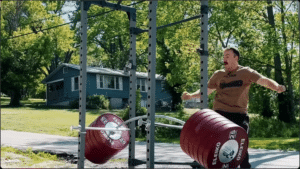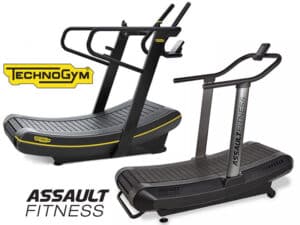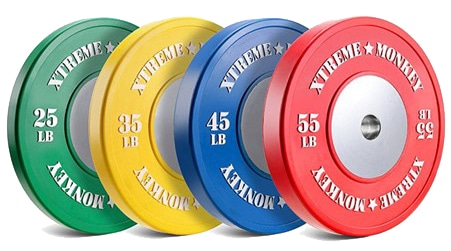Gym Equipment Upgrades: A Comprehensive Guide to Revitalize Your Fitness Facility
In the ever-evolving world of fitness, gym owners must stay on top of trends and adapt to the changing demands of their clientele. This includes updating and upgrading gym equipment to meet customer expectations, keep up with the competition, and maintain a strong brand image. In this comprehensive guide, we will explore the importance of upgrading gym equipment and provide a roadmap for making informed decisions on when and how to invest in new gear for your facility.
Understanding the Need for Equipment Upgrades
One of the primary reasons for upgrading gym equipment is to ensure the satisfaction of your clients. As fitness enthusiasts become more discerning and knowledgeable, they expect their gym to provide high-quality, up-to-date equipment that meets their needs and preferences.
Another reason to upgrade equipment is to stay competitive in the fitness industry. With new gyms opening and existing ones continually improving their offerings, it’s essential to keep pace with the latest trends and technologies to maintain a loyal customer base.
Lastly, investing in new equipment can enhance your gym’s brand equity. A well-maintained, modern facility with state-of-the-art equipment can attract new members and encourage existing ones to remain loyal to your brand.
Meeting Customer Expectations
In a highly competitive market, customer satisfaction is of utmost importance. To keep your clients happy and coming back for more, it’s essential to provide fitness equipment that meets their expectations in terms of quality, functionality, and aesthetics.
Upgrading to the latest equipment will not only cater to the needs of your clients but also demonstrate your commitment to providing the best possible workout experience. This, in turn, can foster loyalty and increase member retention.
Staying Competitive in the Fitness Industry
With new gyms opening and existing ones constantly upgrading their facilities, it’s crucial to stay ahead of the competition by providing top-notch equipment and services.
Investing in the latest fitness gear can give your gym a competitive edge and help attract new members. Additionally, offering a diverse range of equipment and workout options can cater to the varying preferences and fitness levels of your clientele.
Enhancing Your Gym’s Brand Equity
A gym’s brand equity is influenced by several factors, one of which is the quality and range of equipment provided. Upgrading your gym equipment not only improves the overall look and feel of your facility but also sends a clear message to your clients that you are committed to their fitness and well-being.
By investing in new, state-of-the-art equipment, you can elevate your gym’s brand image and ensure that your facility stands out in the crowded fitness landscape.
Embracing the Latest Fitness Technology
The rapid advancement of technology in the fitness industry has led to the development of innovative equipment that offers enhanced functionality, connectivity, and user experience. By incorporating the latest fitness gear into your facility, you can cater to the growing demand for tech-savvy workout solutions and provide your clients with a cutting-edge fitness experience.
Evaluating the Lifespan of Gym Equipment
Gym equipment has varying lifespans depending on factors such as usage, maintenance, and overall quality. On average, cardio machines have a lifespan of 5-7 years, while strength equipment can last for 10 years or more.
It’s essential to regularly assess the condition of your equipment and determine whether it’s time for replacements or upgrades. This can help prevent potential safety hazards, minimize downtime due to repairs, and maintain a top-performing facility.
Signs It’s Time to Replace Your Fitness Equipment
There are several indicators that suggest it’s time to replace your gym equipment, including:
- Safety concerns: If your equipment poses a risk to users due to wear and tear or malfunctioning components, it’s crucial to replace it promptly.
- Poor condition: Outdated or worn-out equipment can negatively impact your gym’s image and members’ satisfaction.
- Frequent repairs: If a piece of equipment requires constant maintenance or repairs, it may be more cost-effective to replace it with a newer model.
- Member requests: Listen to your clients and consider upgrading equipment based on their feedback and preferences.
- Alignment with industry trends: Stay on top of fitness trends and ensure your gym equipment caters to the evolving needs of your clientele.
Developing a Gym Equipment Upgrading Strategy
Creating a proactive equipment upgrading strategy can help you stay ahead of the curve and maintain a competitive edge in the fitness industry. Consider the following steps to develop a comprehensive plan:
- Gather feedback from clients and staff to identify equipment needs and preferences.
- Monitor industry trends and stay informed about emerging technologies and fitness innovations.
- Assess the current condition of your equipment and determine the necessary upgrades or replacements.
- Develop a budget and explore financing options for equipment purchases.
- Schedule regular equipment maintenance and inspections to prolong the lifespan and performance of your gear.
Financing Options for Gym Equipment Upgrades
Investing in new gym equipment can be a significant financial undertaking. However, there are various financing options available to help you manage costs and maintain a healthy cash flow.
Some common financing solutions include:
- Leasing: Spread the cost of equipment over time by entering into a lease agreement with a finance provider.
- Equipment loans: Secure a loan specifically for the purchase of gym equipment, with the gear serving as collateral.
- Business line of credit: Access a flexible credit line that can be used for equipment purchases and other business expenses as needed.
Conclusion
Upgrading gym equipment is a crucial aspect of maintaining a successful fitness facility. By investing in the latest gear, meeting customer expectations, staying competitive in the industry, and enhancing your gym’s brand equity, you can ensure the continued growth and success of your business. Develop a proactive equipment upgrading strategy and explore financing options to make the process more manageable and cost-effective. With the right approach, your gym can thrive and provide an unparalleled fitness experience for your valued clients.
Gym Equipment Upgrades: A Comprehensive Guide to Revitalize Your Fitness Facility
In the ever-evolving world of fitness, gym owners must stay on top of trends and adapt to the changing demands of their clientele. This includes updating and upgrading gym equipment to meet customer expectations, keep up with the competition, and maintain a strong brand image. In this comprehensive guide, we will explore the importance of upgrading gym equipment and provide a roadmap for making informed decisions on when and how to invest in new gear for your facility.
Understanding the Need for Equipment Upgrades
One of the primary reasons for upgrading gym equipment is to ensure the satisfaction of your clients. As fitness enthusiasts become more discerning and knowledgeable, they expect their gym to provide high-quality, up-to-date equipment that meets their needs and preferences.
Another reason to upgrade equipment is to stay competitive in the fitness industry. With new gyms opening and existing ones continually improving their offerings, it’s essential to keep pace with the latest trends and technologies to maintain a loyal customer base.
Lastly, investing in new equipment can enhance your gym’s brand equity. A well-maintained, modern facility with state-of-the-art equipment can attract new members and encourage existing ones to remain loyal to your brand.
Meeting Customer Expectations
In a highly competitive market, customer satisfaction is of utmost importance. To keep your clients happy and coming back for more, it’s essential to provide fitness equipment that meets their expectations in terms of quality, functionality, and aesthetics.
Upgrading to the latest equipment will not only cater to the needs of your clients but also demonstrate your commitment to providing the best possible workout experience. This, in turn, can foster loyalty and increase member retention.
Staying Competitive in the Fitness Industry
With new gyms opening and existing ones constantly upgrading their facilities, it’s crucial to stay ahead of the competition by providing top-notch equipment and services.
Investing in the latest fitness gear can give your gym a competitive edge and help attract new members. Additionally, offering a diverse range of equipment and workout options can cater to the varying preferences and fitness levels of your clientele.
Enhancing Your Gym’s Brand Equity
A gym’s brand equity is influenced by several factors, one of which is the quality and range of equipment provided. Upgrading your gym equipment not only improves the overall look and feel of your facility but also sends a clear message to your clients that you are committed to their fitness and well-being.
By investing in new, state-of-the-art equipment, you can elevate your gym’s brand image and ensure that your facility stands out in the crowded fitness landscape.
Embracing the Latest Fitness Technology
The rapid advancement of technology in the fitness industry has led to the development of innovative equipment that offers enhanced functionality, connectivity, and user experience. By incorporating the latest fitness gear into your facility, you can cater to the growing demand for tech-savvy workout solutions and provide your clients with a cutting-edge fitness experience.
Evaluating the Lifespan of Gym Equipment
Gym equipment has varying lifespans depending on factors such as usage, maintenance, and overall quality. On average, cardio machines have a lifespan of 5-7 years, while strength equipment can last for 10 years or more.
It’s essential to regularly assess the condition of your equipment and determine whether it’s time for replacements or upgrades. This can help prevent potential safety hazards, minimize downtime due to repairs, and maintain a top-performing facility.
Signs It’s Time to Replace Your Fitness Equipment
There are several indicators that suggest it’s time to replace your gym equipment, including:
- Safety concerns: If your equipment poses a risk to users due to wear and tear or malfunctioning components, it’s crucial to replace it promptly.
- Poor condition: Outdated or worn-out equipment can negatively impact your gym’s image and members’ satisfaction.
- Frequent repairs: If a piece of equipment requires constant maintenance or repairs, it may be more cost-effective to replace it with a newer model.
- Member requests: Listen to your clients and consider upgrading equipment based on their feedback and preferences.
- Alignment with industry trends: Stay on top of fitness trends and ensure your gym equipment caters to the evolving needs of your clientele.
Developing a Gym Equipment Upgrading Strategy
Creating a proactive equipment upgrading strategy can help you stay ahead of the curve and maintain a competitive edge in the fitness industry. Consider the following steps to develop a comprehensive plan:
- Gather feedback from clients and staff to identify equipment needs and preferences.
- Monitor industry trends and stay informed about emerging technologies and fitness innovations.
- Assess the current condition of your equipment and determine the necessary upgrades or replacements.
- Develop a budget and explore financing options for equipment purchases.
- Schedule regular equipment maintenance and inspections to prolong the lifespan and performance of your gear.
Financing Options for Gym Equipment Upgrades
Investing in new gym equipment can be a significant financial undertaking. However, there are various financing options available to help you manage costs and maintain a healthy cash flow.
Some common financing solutions include:
- Leasing: Spread the cost of equipment over time by entering into a lease agreement with a finance provider.
- Equipment loans: Secure a loan specifically for the purchase of gym equipment, with the gear serving as collateral.
- Business line of credit: Access a flexible credit line that can be used for equipment purchases and other business expenses as needed.
Conclusion
Upgrading gym equipment is a crucial aspect of maintaining a successful fitness facility. By investing in the latest gear, meeting customer expectations, staying competitive in the industry, and enhancing your gym’s brand equity, you can ensure the continued growth and success of your business. Develop a proactive equipment upgrading strategy and explore financing options to make the process more manageable and cost-effective. With the right approach, your gym can thrive and provide an unparalleled fitness experience for your valued clients.








